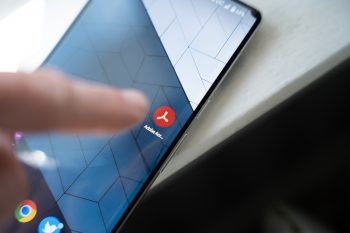
Advanced Features of PDF Drive Book Downloader
While PDF Drive Book Downloader already stands out with its user-friendly interface and essential features, its developers have gone the extra mile to incorporate advanced functionalities that elevate the user experience to new heights. Let’s delve into some of the cutting-edge features that make PDF Drive Book Downloader a must-have tool for anyone passionate about literature and research.
1. Smart Synchronization:
- Seamlessly sync your downloaded library across multiple devices.
- Enjoy a consistent reading experience whether you’re using your laptop, tablet, or smartphone.
2. Annotation and Note-Taking:
- Annotate and highlight important sections of your downloaded books.
- Integrate a note-taking feature to jot down insights, quotes, or references directly within the application.
3. Cloud Integration:
- Connect PDF Drive Book Downloader to popular cloud services like Google Drive or Dropbox.
- Effortlessly backup your library, ensuring that your curated collection is secure and accessible from any device.
4. Night Mode and Custom Themes:
- Enhance your reading experience with night mode, reducing eye strain during low-light conditions.
- Choose from a variety of custom themes to personalize the visual aesthetics of the application.
5. Audio Book Conversion:
- Convert downloaded texts into audio files for a versatile reading experience.
- Ideal for users who prefer listening to books during commutes, workouts, or while multitasking.
6. Integrated Dictionary and Translation:
- Access definitions and translations on the go with the integrated dictionary feature.
- Break language barriers by translating text directly within the application.
7. User-Generated Content Hub:
- Join a community of readers and researchers within the application.
- Share book recommendations, discuss literary insights, and discover new titles through the user-generated content hub.
8. Privacy and Security Measures:
- Prioritize privacy with enhanced security features.
- Benefit from encrypted connections and secure download protocols to ensure the confidentiality of your reading habits.
9. Advanced Analytics:
- Track your reading habits and preferences with advanced analytics tools.
- Receive personalized recommendations based on your reading history, enhancing your book discovery journey.
10. Social Media Integration:
- Share your favorite books and reading progress on social media directly from the application.
- Connect with fellow readers and build a digital book club within your social networks.
Elevating the Reading Experience:
The integration of these advanced features transforms PDF Drive Book Downloader from a mere tool for acquiring digital books into a comprehensive reading companion. By addressing the diverse needs of users, from avid readers to academic researchers, the application is not just a downloader; it’s a hub for literary exploration and intellectual collaboration.
Looking Ahead:
As PDF Drive Book Downloader continues to evolve, we can anticipate further refinements and additions to its feature set. The commitment to enhancing the user experience and adapting to the ever-changing landscape of digital reading positions PDF Drive Book Downloader as a frontrunner in the realm of book downloading applications.
In conclusion, the advanced features of PDF Drive Book Downloader underscore its dedication to providing a holistic and customizable reading experience. Whether you’re a casual reader, a student, or a seasoned researcher, the application’s versatility ensures that it caters to your unique preferences, making the journey of exploring literature not only accessible but also profoundly enriching. As we witness the ongoing evolution of digital reading, PDF Drive Book Downloader stands as a beacon, guiding us into a future where the boundaries between the physical and digital worlds of literature continue to blur.